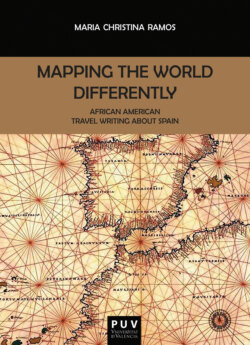Mapping the World Differently

Реклама. ООО «ЛитРес», ИНН: 7719571260.
Оглавление
Maria Christina Ramos. Mapping the World Differently
Отрывок из книги
MAPPING THE WORLD DIFFERENTLY
AFRICAN AMERICAN
.....
Resulting from an examination of these questions, this study argues that twentieth-century African American travel writing about Spain is concerned with the power of geographic imagination in shaping our relationships to others around the globe. Revising accepted imaginative geographies5 rooted in early modern European colonial conceptions of the world, these travel narratives use the vantage point of Spain in an effort to create new maps of the globe, opening up possibilities for reconceiving transnational black identities. Central to this project are the transformative literary maps of Spain narrated within these works. Spain is mapped as one site within a network of interconnected sites, pulsating with the ebb and flow of exchange across space and time. The perceived liminal position of Spain—geographically (between Europe and Africa), historically and culturally (between West and East), and politically (between liberal secularism and religious totalitarianism)—enables challenges to the static traditional European divisions of global space. Similarly, individual identities are mapped like networked spaces, as relational and always in flux, as seen in the recurring use of one of the most common figures of representation in these works, the “Moor,” whose ethnic, racial, religious, and status identities are constantly shifting. The indeterminate nature of the Moor’s identity, both as a marker of difference and as an image allowing a variety of affinities and alliances, provides these African American writers with a figure through which to reconsider the value of transnational back identities. These works, therefore, not only create specific visions of Spain but also use Spain as a lens through which to reconstruct global spaces with the goal of shaping the global relations that are constructed by and within these spaces.
In Chapter 1, I will provide a context for this book, noting the key threads of scholarship and concepts that have shaped my approach to analyzing African American travel writing about Spain. It begins with a rationale for studying this particular archive of travel writing and includes a brief survey of the Anglo and Anglo-American representations of Spain that the African American travel literature in this study is revising. It also provides background for my specific geographic approach to these narratives, including a discussion of literary cartography and an introduction to contemporary counter-cartographic methods that can be applied in African diasporic studies.
.....